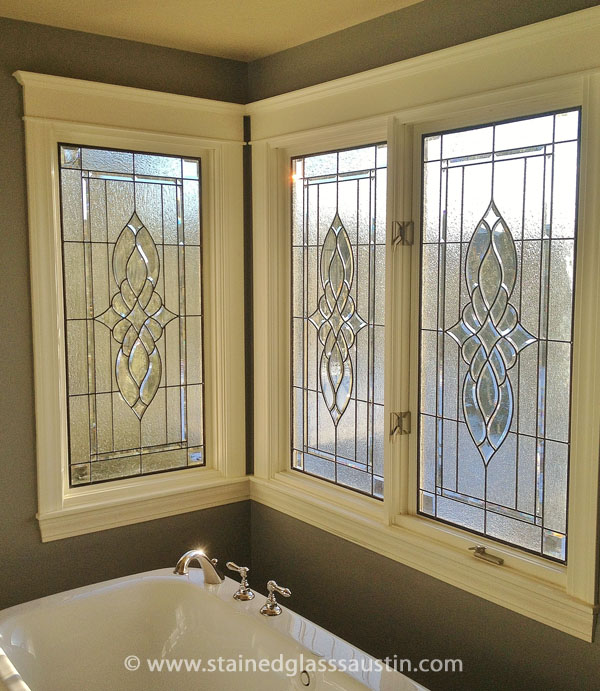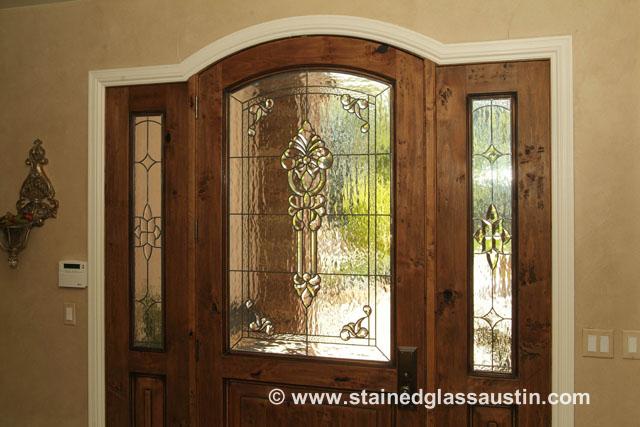When Should Stained Glass Be Restored?
The ability to know when it is time to replace or restore your Austin Church’s stained glass is not something the average parishioner knows. Perhaps the glass looks dirty or aged but in a glance, almost nothing, to the untrained eye, may even look askew. To understand what is really going on with your church’s stained glass we urge you to get your church’s stained glass inspected by a professional. However, there are ways to do a simple inspection yourself to decide whether they need restoration. For this, we tell our potential clients to refer to the two A’s meaning Age and Appearance. To find out how to use simple reference points when inspecting and thinking about replacing the glass on your Austin church–read below.
Consider the Appearance of Your Church’s Stained Glass
The way your Austin church’s stained or painted glass windows looks can tell you almost as much as you need to know about its state and whether or not restoration is due. Inspecting closely and looking at visual cues will not only tell you whether it needs repair but what is causing the issues resulting in repair. We value our potential clients as much as our existing clients. So, to help you better understand what to look for, we have compiled a list of seven common signs you glass likely needs repair.
Appearance: 7 Top Signs of Stained Glass Deterioration
- Sagging or Bulging Glass: Walk up to your stained glass window and look at it closely. Peer up at both the windows and panes of glass. Do you see any bulging? Do any of the panes of the window have a concave or convex appearance? Stand far enough away to see the entire windows. From this perspective does your stained glass look uneven? Are some horizontal lines slightly skewed up or down? If any of these are true of your stained glass window they could be suffering from wind damage or structural degradation.
- Dull or Faded Looking Stained Glass: Look carefully at the lead creases of your glass. Is there dirt build-up between the lead and the glass? Are the colors muted? Does it look like the light coming through is weak or diffused? This could mean there are decades of dirt on your Austin church’s stained glass windows–both inside and out. A lot of things “stick” to glass and build-up incredibly over time: environmental debris, dirt, grease, and even old cleaners that probably shouldn’t have been used. Doing a thorough cleaning yourself in cases like these is likely not enough.
- Cracked Stained Glass Panels: Look as close as you can at each panel of your glass. Especially at attachment points. This is where many cracks radiate from. The movement of the supporting structures, especially wooden ones, over time is what causes this. If the cracks are in the middle of the glass panes they likely came from damage from a strike. Things like hail, tree branches or even an accidental bump from someone or something inside often cause large or even micro cracks. Small cracks are indeed fairly harmless but, over time the glass pieces will rub against each other and make the damage worse. It will also increase the scope and cost of repair as time ticks by.
- Gaps In The Glass: The way to look for gaps in the glass is by waiting until early evening (when it is still fairly bright. When you turn off the lights in your chapel and get close to the glass you will be able to see daylight streaming more brightly through gaps. Look especially close around the frames of the panels, since this is where they most likely appear. These gaps mean the glass has shifted over time due to the movement of the frame. You may even see some gaps are actually pieces that have broken off completely in those areas.
- Detached or Failing Frames or Support Structures: To inspect all the support structures around the window you should carefully trace each intersecting frame line. Around the edges, there should not be any steel bars showing or protruding. Likewise, if you have wood framing–make sure no wood is missing, broken or splintered. In both of these cases, you have severe structural damage. Since these structures are what keep your very heavy glass in-place– repair to these support structures should be pursued at the very least.
- Soft Lead: If you can access the stained glass of your Austin cathedral–you can test for soft lead by carefully squeezing various parts of the lead beading. If the lead is soft this means it could bend under the weight of the glass causing sagging or complete failure. In fact, this type of damage almost always proceeds or goes hand in hand with sagging or bulging glass. *Lead is a toxic substance so we suggest wearing gloves if you want to do this yourself. Calling a professional to deal with any sort of lead caming is the best/safest option.
- Cracked Lead: If you look at the leading on your stained glass windows and see cracks, chips or missing lead–your window needs to be re-leaded. You may not realize it but the stained glass on your window is actually the strongest part. When stained glass windows require repair or restoration it is almost always because of issues that stem from the degradation of the lead, since glass itself really doesn’t “degrade”.
Age: Why it Matter To The State of Your Austin Church’s Stained Glass
We are at an era in stained glass history that is critical for preserving stained glass history. This is because a disproportionately high amount of stained glass in churches–here in Austin and across the United States– are reaching the point where restoration is imminent. Stained glass in most churches was created at the turn/beginning of the last century. This glass lasts about 80-100 years before needing repair. Since it is 2019–the time is now. Churches, especially those in the west(which was settled later than the east) were primarily built around this time. For this reason, if your Austin church is older than 80 years old and has stained glass windows–it is likely time to have them repaired.
Whether because of age or any of the seven appearance signs of degradation– if any of these criteria apply to your church it is time to call in a professional. Contact us at Stained Glass Austin to schedule a free on-site assessment for your church today!




